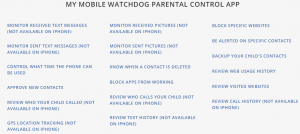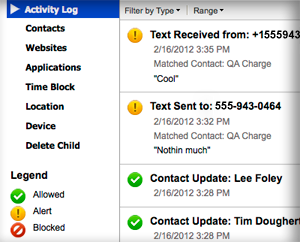Did you hear that Snapchat was hacked, also known as ‘The Snappening’? The hackers claim that they will be releasing up to 200,000 pictures from Snapchat. Many of these images are nude or semi nude pictures that kids, as young as 10 or 11 years old, have snapped to other people. Half of Snapchat users are teenagers. Soooo…..once again, take this chance to remind your young ‘snapper’ that nothing disappears on the internet. Nothing. Ever.
Do you think your child is using Snapchat? Have you talked to her about the reality of disappearing pictures? It can be a tough discussion especially when you talk about the nature of some of these pictures. One of the best ways to generate a discussion with children is to take the attention off of them. They tend to get defensive, discount what you say as ‘you don’t know what you are talking about’, and shut down. One suggestion is to have them read an article about the incident. There are many out there. Just Google ‘The Snapping’. Then ask them what they think about it. Believe it or not, kids have strong opinions about this stuff. They may not always be too accurate, but they have them. Once you get them comfortable talking, they will probably have a story or two about what has happened to them or their friends.
In case you are not all too familiar with Snapchat, let’s take a second to give you the basics.
What is it?
Snapchat is a photo messaging application. Users can take pictures, record videos, add text and drawings, and send it to a list of recipients. The attraction, especially for kids, is the concept that the photo ‘disappears’ after a defined amount of time, 1-10 seconds. The intent of the founders was to created a social network with greater privacy than other social networks, like Instagram and Facebook.
Like many social networks, users must be 13 years old, which really doesn’t slow down any 10, 11, or 12 year old. As long as simple math can be done, 2014-13, anyone can set up an account.
How popular is it?
Pretty popular! Snapchat was launched in September, 2011. As of September 2014, there are 100 million monthly active users. And how many snaps does that amount to? Ready for this? The number of snaps per day is 400 million! Holy Snapchat! Clearly it has the attention of the public, specifically, the 10-17 year old public.
What are the dangers?
The most obvious danger is the incorrect perception that the image ‘disappears’. Let me say it one more time. Nothing. Disappears. On. The. Internet. While most kids cannot hack into the Snapchat servers, they sure are capable of taking a screenshot. Yes, a notification is sent to the sender that a screenshot was taken. But so what? Who cares? Certainly not the receiver that took the screenshot because the photo is now saved and in his possession.
A second danger is the false sense of security that the disappearing picture perception gives kids. Those that have previously exercised good judgement in their picture choices, now feel more comfortable pushing the envelope on the type of pictures and get a little more daring. There is a lot of pressure to get edgier, more daring. Why not? It’s fun and the picture is gone in 10 seconds. Right? Not so much.
What can you do?
As always, communicate with your child. Find a way to start a dialog on this topic. Most often, kids are simply unaware of the dangers and the implications of inappropriate actions. Children, especially the 10, 11, and 12 year olds, are very literal. We tell them that the picture never goes away. They nod their heads as if they understand. However, when I teach kids, I hear more often than not ‘My mom told me that, but I didn’t really understand what she meant.’ They need concrete examples and stories that they can relate to and connect the dots.
Privacy Settings
I, actually, had never heard about privacy settings for Snapchat. But yes, there are a couple. There is one for who can send you snaps and another for who can see your stories. Follow this link for easy to follow instructions on how to set this for your child. Snapchat Privacy Settings
At the end of the day, Snapchat, like most apps, is a fun social network. The key is for you to understand the app, its risks, and communicating to your child about appropriate usage and dangers.



